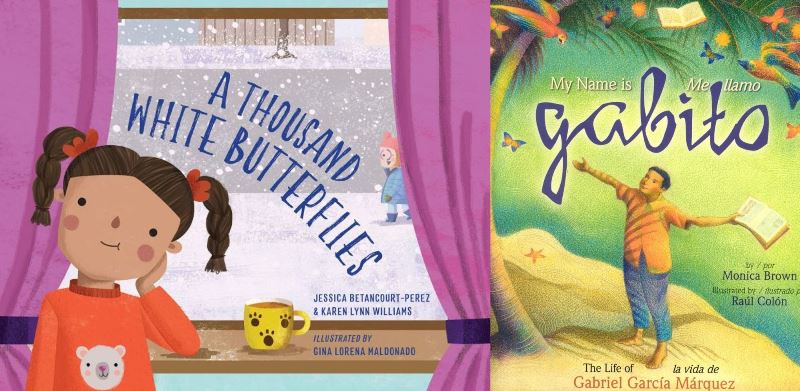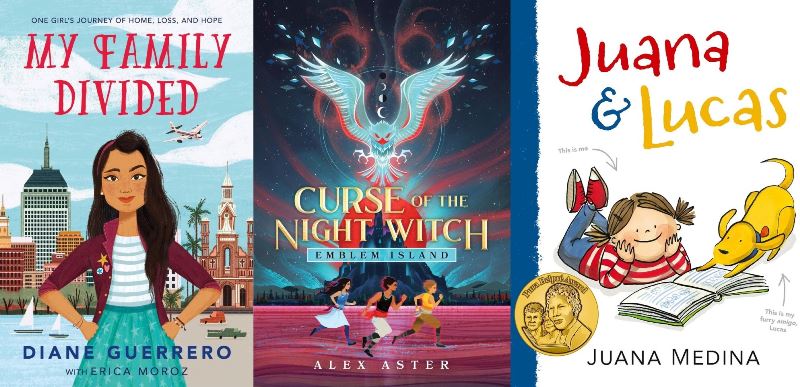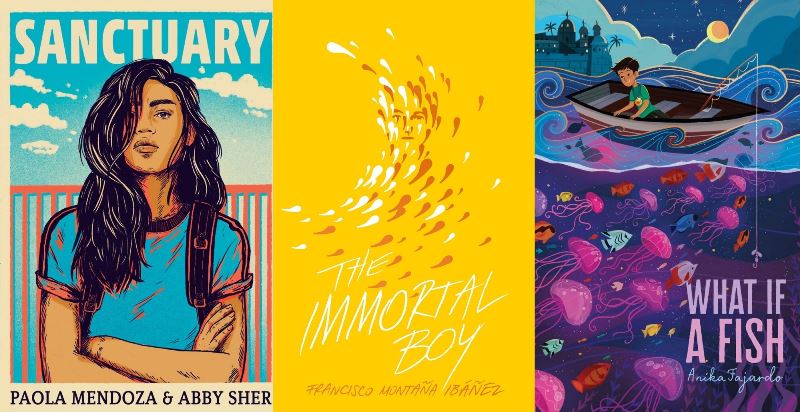Colombian American Kid Lit Comes of Age
In recent years, there has been a surge of Colombian creators crafting works that celebrate the vibrancy and resiliency of their culture, broadening the diversity and scope of Latino representation in children's publishing.

The trailer for Disney’s upcoming animated film Encanto stirred a lot of excitement, not just thanks to Lin Manuel Miranda’s attachment to the project, but because of the film’s setting—Colombia. The charming sneak peek is a stark contrast to the usual representations of Colombia that typically focus on its history of violence and political instability. Recently, Colombian creators within the youth literature landscape have crafted works that instead celebrate the vibrancy and resiliency of their culture, broadening the diversity and scope of Latino representation in publishing.
A community of stories
Colombia’s literary heritage is borne from strong storytelling. Over the years, children’s authors have found inspiration in Colombian stories that celebrate the love of books. One such title is Monica Brown and Raúl Colón’s My Name Is Gabito/Me llamo Gabito: The Life of Gabriel García Márquez (2007), which chronicles the childhood influences that shaped the imagination of the future Nobel Laureate. Years later, Jeanette Winter’s Biblioburro: A True Story from Colombia/Una historia real de Colombia (2010), and Brown and John Parra’s Waiting for the Biblioburro/Esperando el biblioburro (2016), portrayed Luis Soriano, a librarian who brought books to rural communities in the Andes region. Most recently, Digging for Words/Rescatando palabras (2020), by Angela Burke Kunkel and illustrated by Bogotá native Paola Escobar, depicts the efforts of a trash collector who recovers discarded books to add to the community library run out of his home. At the heart of these titles are shared stories and community, both central aspects of Colombia culture and identity.
Colombia’s literary mantle is also marked by its place as one of the largest importers of Spanish-language books. Among the most notable Colombian youth imports are the works of the prolific duo: writer Jairo Buitrago and illustrator Rafael Yockteng (originally from Peru, but based in Bogotá). Among their most acclaimed titles is Jimmy the Greatest/ ¡Jimmy, el más grande! (2012), depicting an Afro-Colombian Caribbean community, and Walk with Me/ Camino a casa (2017), a poignant story that alludes to the effect political turmoil bears on families. Colombian imports have been notable standouts in new independent publisher Levine Querido’s frontlist. Young adult novel The Immortal Boy/El inmortal by Francisco Ibañez Montañez and middle grade novel Neverforgotten by Alejandra Algorta (both 2021) were published as dual-language flip books—the Spanish version can be read on one side and readers can flip to the other side to read the English translation. Both languages are given equal importance.

Growing up Colombian
As the capital city, it is not surprising that many titles portraying Colombian childhood and adolescence are set in Bogotá. The aforementioned The Immortal Boy and Neverforgotten, along with Juana Medina’s Pura Belpré award-winning “Juana & Lucas” books, present starkly different family dynamics and socioeconomic realities. These nuanced portrayals offer glimpses into diverse lived experiences of Colombian youth from the painful and complex to the joyful and fun.
Depictions of growing up Colombian American are also honest and refreshingly varied. Anika Fajardo’s middle grade debut, What If a Fish (2020), explores the yearning to connect with a culture that is intrinsic and unknown. Paola Mendoza’s speculative YA novel (cowritten with Abby Sher), Sanctuary (2020), portrays a world in which U.S. citizens are microchipped, and the undocumented are forced to flee. The impact of immigration policy is also central to Diane Guerrero’s My Family Divided: One Girl’s Journey of Home, Loss and Hope (2018), the young reader’s edition of her memoir, relating the difficulties she faced after her parents were deported to Colombia. Rounding out the genres, is Alex Aster’s “Emblem Island” fantasy series, inspired by her Colombian abuela’s stories, in which characters contend with their predetermined destinies—a sentiment that resonates closely with multicultural children.
Several recent picture books also center ordinary, coming-of-age experiences. Alexandra Alessandri’s two picture books focus on important annual milestones—Felíz New Year, Ava Gabriela! (2020), illustrated by Addy Rivera Sonda, and Isabel and Her Colores Go to School (2021), illustrated by Courtney Dawson. And, Jessica Betancourt-Perez’s A Thousand White Butterflies (2021), cowritten by Karen Lynn Williams and illustrated by fellow Colombian Gina Maldonado, features a girl’s first experience with snow. These titles’ protagonists manage their shyness or make new friends despite language barriers and present universal childhood experiences through the Colombian perspective. Details featured in the renderings of these books, like the sombrero vueltiao on a snowman, the colors of the flag (amarillo, azul, y rojo) in the end pages, buñuelos on the table, or the New Year’s tradition of wearing yellow, reflect familiar experiences for Colombian families.

More to come
The need to tell stories, as seen in the growing number of Colombian creators, is a symbol of Colombia's abundance. As the third most populous country in Latin America and with coastlines that touch both the Atlantic and Pacific Oceans, Colombia is geographically, ethnically, and culturally diverse. Colombians and Colombian Americans share a sense of pride in that richness and complexities that come along with it. But, there is room for growth and for more stories to be told by a greater diversity of creators, especially the Indigenous peoples of Colombia and the Afro-Colombian communities. With more translations around the corner, like the upcoming wordless picture book, Antonia: A Journey to a New Home by Dipacho, children’s books can continue to broaden the understanding of the Colombian experience and create greater empathy across cultures.
Jessica Agudelo is the youth collections coordinator at BookOps, the technical services collaboration between Brookly Public Library and New York Public Library. Most recently, she served as chair of the 2021 Pura Belprè Award committee. Jessica comes from a large and vibrant Colombian family and was born and raised in Queens, New York.
RELATED
The job outlook in 2030: Librarians will be in demand
The job outlook in 2030: Librarians will be in demand
ALREADY A SUBSCRIBER? LOG IN
We are currently offering this content for free. Sign up now to activate your personal profile, where you can save articles for future viewing





Add Comment :-
Be the first reader to comment.
Comment Policy:
Comment should not be empty !!!